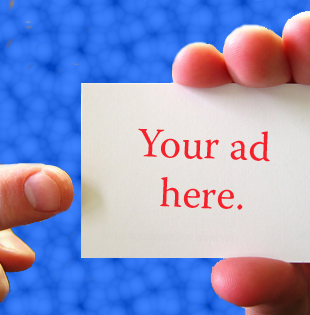How social media is rewriting the advertising rules
 The constant changes in the world of advertising of late have been brought about largely due to social media. The public are now exposed to more adverts than ever, and whilst some may find this intrusion annoying, for businesses it is a golden opportunity which has to be played carefully.
The constant changes in the world of advertising of late have been brought about largely due to social media. The public are now exposed to more adverts than ever, and whilst some may find this intrusion annoying, for businesses it is a golden opportunity which has to be played carefully.
It’s one of the odder facts about the internet, especially social media, that users often express disgust at their favourite medium, which is invariably free to access, carrying ads. It’s never made clear how these global companies, transferring gigabits of data in the blink of an eye, are supposed to pay for themselves or turn a profit. The lack of visible ads was one of Google’s strongest points when it first launched as a simple search engine. All of this has changed further since, and the advent of social media has brought about a constantly evolving advertising arena to keep up to date with. Here’s what has happened as we enter the tail end of 2013.
The nimble profile of Twitter has always posed something of a problem for the company when it comes to selling advertising space. In the early days, ads could have been carried on its .com site (although they resisted), but now Twitter is more likely to be visited on a smartphone app or browser plugin, that option is all but gone.
Twitter has experimented with sponsored ads that come up on searches and promoted tweets appearing in users’ timelines, but the day-to-day Twitter experience is largely ad-free. It does, however, take payments for suggesting users follow certain accounts, which is pretty unintrusive and gives the user a sense of choice in the transaction. Users are opting in to being marketed to by corporations, and they can unfollow whenever they like, so it’s difficult to be critical of this means. More controversial are celebrity endorsements (displayed with a Tweeted picture of a famous person with a product), which have enraged Twitter users.
YouTube is in a unique position as people use it solely to watch videos, which makes it the perfect medium for ads with motion that can also be targeted to individuals. Since many YouTube views take place off the main site, the ability to precede a video with an advert or superimpose a static ad over the video are technically simple.
Giving users the ability to skip the ad after a few seconds is a good touch, and encourages advertisers to be snappy in their messaging if they want results. However, some ads can’t be closed until 30 seconds and do test user patience.
With YouTube and Twitter methods it’s pretty obvious you’re being advertised to, and this is where users might accept the methods they employ. It’s when users feel they are being exploited (particularly in terms of their personal details) that a negative response is found. Facebook recently got stung with a $20 million settlement over the use of people’s personal information in targeted ads (an amount they won’t be losing much sleep over). For their troubles, around 600,000 users will apparently have $15 (about £10) each as compensation. No problem for Facebook, but smaller businesses would obviously want to steer clear of this.
Elsewhere amongst the internet giants, is is apparent Gmail “reads” our emails to target ads with, but we accept this is the way it is and trust Google to handle our data sensitively –- and in accordance with the law. Since we probably email much more personal information than we would dream of putting on Facebook, it shows it’s not so much the fact of personal information being exploited by advertisers, it’s the means, and the implied granting of permission.
Yahoo! once ruled the search engine world, even with stiff competition from the Excites, AltaVistas and Lycoses of the fledgling internet. Of course we all know what happened when the little upstart from Menlo Park came along, but one of the remarkable things about Yahoo! is it seems to be on the up again. Perhaps users are getting a little uncomfortable with Google’s ubiquity, or maybe there’s a real issue at the heart of search that needs addressing if people are frequently sent to the wrong sites through strongarm manipulation. The arrival of new CEO Marissa Mayer (ex-Google) could possibly have turned the company around in double-quick time, too.
Visiting the Yahoo! site, however, will fill many an old-timer with a feeling of nostalgia. It looks pretty much like you might remember it if you last visited in 2005 –- a little search box and tons of popular news articles and more banner ads. With the company more or less holding station, it’ll be interesting to see which way it goes and how well it has pitched its position.
Near-Field Communication is one of those technologies that’s been hanging on the fringes of critical mass for some years, but is yet to capture the public (or device manufacturers’) imagination. If and when it does, however, we can be sure our proximity to NFC sensors will be exploited to the max by advertisers and influencers. Should Apple include it with future handsets then a craze could well begin.
The Californian giant has, meanwhile, taken a bold step with its new advertising campaign featuring a likeable Apple “genius” who helps out people in need thanks to his tech expertise. It might sound like everyday marketing fodder, but compared to Apple’s previous attempts at marketing itself as the coolest tech behemoth on the block, it really does have an old-school charm to it. If you’ve not seen the ads, have a look on YouTube – they’ll appear right after that Samsung S4 promo.
By Alex Morris
Source: AllBusiness








